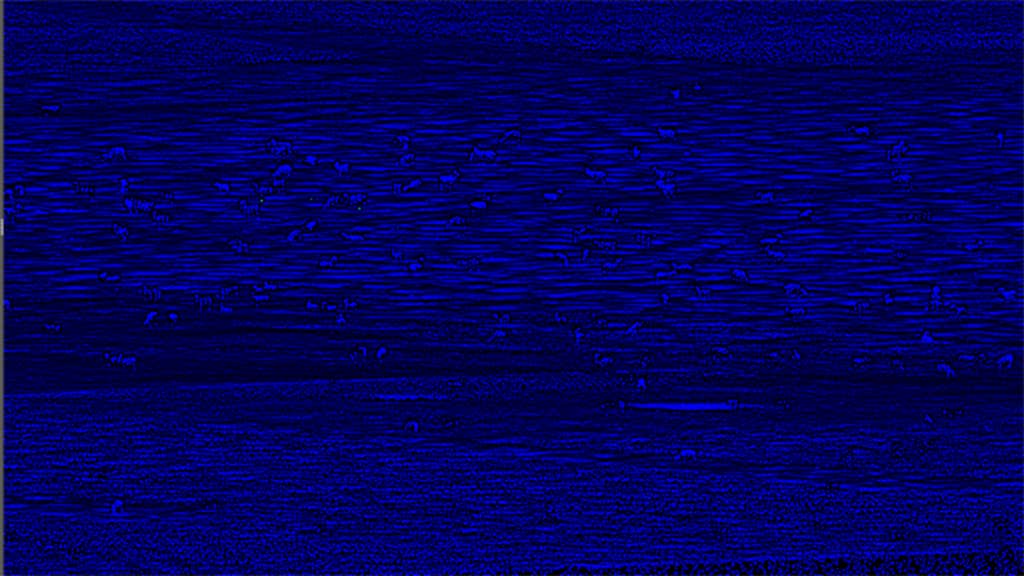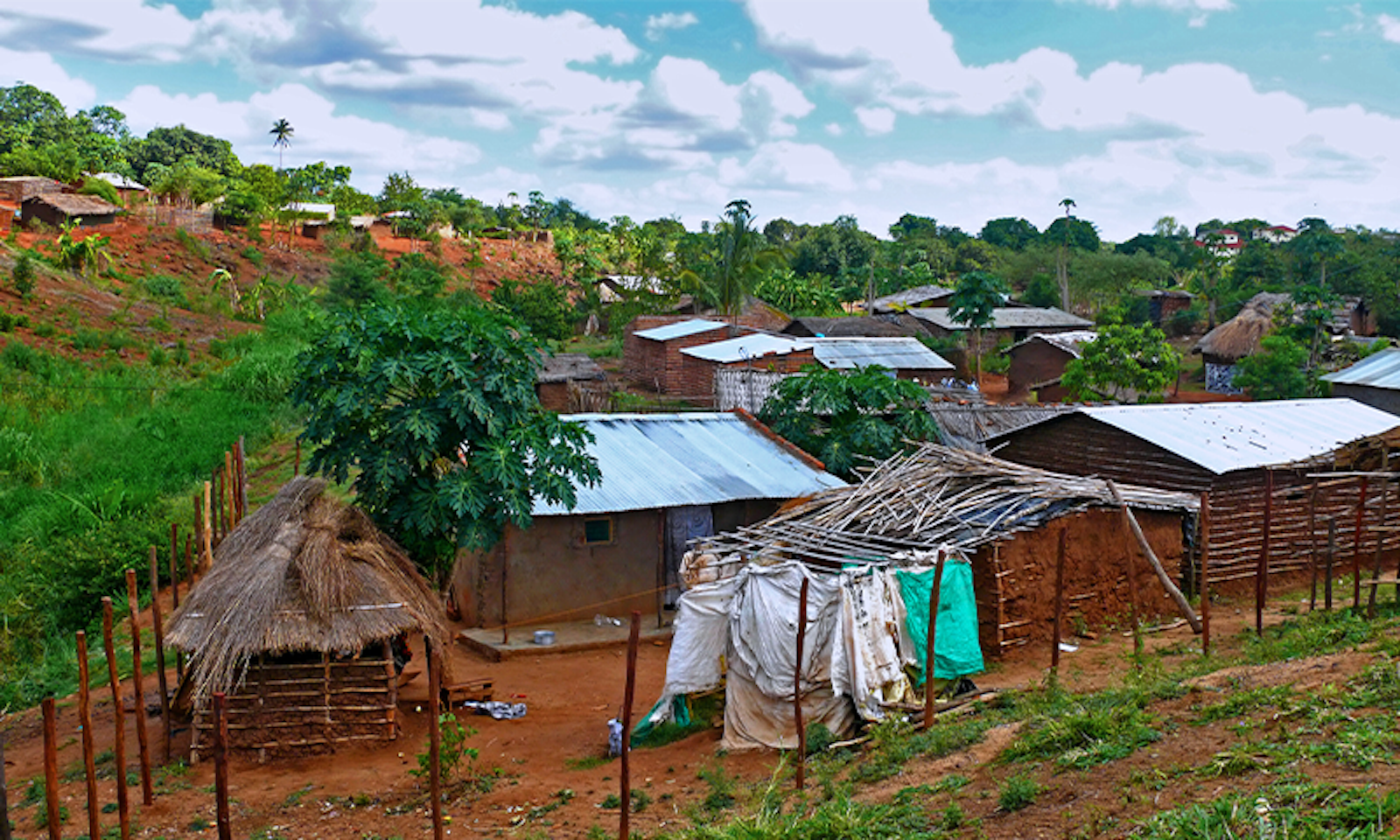
When Cyclone Idai hit Mozambique in 2019, it slammed into Gorongosa National Park with 105-miles-per-hour winds and flooding that put at risk 200,000 people in its path. Immediately, the park leapt into action: Its rangers transformed into a rapid response team that rescued people in canoes and helicopters, and the park’s coffee factory became a food packing facility for emergency supplies, providing sustenance to more than 30,000 families weekly.
Cyclone Idai—one of the deadliest on record in Africa to date—and the subsequent rising waters also had an immediate impact on wildlife in the 1 million-acre park, giving researchers all over the world the opportunity to study the cyclone’s effect on different species. The setup was fortuitous: In addition to being a safari destination, the park is essentially a massive science laboratory, with abundant cameras and animals wearing radio collars. Using the park’s camera grid and hourly pings from animal collars, researchers could watch in near-real time, from their labs thousands of miles away, as collared animals raced to avoid rising waters. In the cyclone’s aftermath, they could observe ways in which the park’s ecosystems responded to the cataclysm.
Gorongosa sits at the southernmost edge of the Great Rift Valley, and the devastation wrought by Cyclone Idai motivated the park’s scientists to turn to research that will help them understand future climate trends for Southern Africa—and the best ways to create resilience against future catastrophes. As the world seeks climate solutions, Gorongosa could become a model in how to analyze and adapt to a changing world.
To understand the impact of events such as more frequent and more powerful storms, park scientists, in collaboration with Princeton University, are creating the Gorongosa Carbon, Climate, and Biodiversity Lab, a collaborative network and a research effort to study the intersections of creatures, their environment, and a changing climate. In addition to research on the impact of stronger storms, the lab also will study how animals impact carbon sequestration, where the carbon is stored in the park, and how it cycles around.
Researchers could watch in near-real time as animals raced to avoid rising waters.
The new research was “born of just pure collaborative efforts from separate dispersed studies in the park,” says Hallie Walker Brown, a postdoctoral researcher at Princeton University. It sprang from conversations among researchers chatting at the park’s cafeteria. The data come from key Mozambican scientists, park employees, and researchers from South Africa, the United Kingdom, and the United States, all working on their own projects but willing to contribute and work together to enable a comprehensive reconstruction of events. It underscores the “special, close-knit, and collaborative research community at Gorongosa,” says the Princeton ecologist Rob Pringle.
That same spirit of collaboration can also be said of the lab: It is not yet an official entity—but, rather, a spontaneous collaborative response by the park’s scientists and other researchers. “Because these really extreme cycles are really unpredictable,” says Walker Brown, “you don’t know when they’re going to happen or where—but because of the nature of Gorongosa, we were able to provide so many data sources toward this effort.”
Size matters
Most recently, Walker Brown co-authored a paper that addresses one aspect of the lab’s research: Size matters. Biologists had long wondered: How does an animal’s body size affect the ability to withstand the effects of storms? The only hints came from research in the 1990s, when a series of hurricanes struck small islands in the Bahamas. There, researchers from the University of California, Davis observed that larger species (lizards) were more resistant to cyclone effects, whereas better dispersers (spiders) recovered faster. But there had never been a comprehensive, comparative research of mammals living on the savanna—until now.

The paper’s findings, published today in the journal Nature, demonstrate that big mammals are better able to withstand the scarcity of food after an event like Cyclone Idai. They’re also more mobile because their longer legs make it easier for them to escape their home ranges after flooding caused by the cyclone. Smaller species were more likely to die during the flood and in the weeks after because they simply drowned in rising waters.
Conservationists are often worried about the decline of megafauna—the big animals in an ecosystem—because they are at risk from perennial pressures such as poaching and habitat loss in the Anthropocene. But Walker Brown says that it’s critically important to realize that smaller species are more at risk from acute effects of events like storms and floods.
She adds that researchers were also surprised to find what people and organizations that work in disaster relief for human populations have long known: that the cyclone’s most severe impact on the species came from the lack of food in the weeks and months that followed, and that animals near the bottom of the food chain were the ones most severely affected. Recognizing this effect of the cyclone is critical for understanding the needs of species in aftermaths of future natural catastrophes. “It’s not just that wind and that initial flooding that’s going to be the main issue,” Walker Brown says. “For many populations, it is a longer-term impact of an altered forage landscape.”
Carbon sequestration
In addition to probing the impacts of dramatic storms, the new lab will take a closer, collaborative look at the role—and movement—of carbon in Gorongosa. As the climate changes, it’s critical to understand how carbon cycles through an environment, since the release of carbon adds to the already-ballooning amount of carbon dioxide in the atmosphere. There are many open questions in understanding how carbon flows through a savanna ecosystem, says Pringle, who studies rules that govern ecosystems. Fire plays a role, as do herbivores, who eat plants that could otherwise store carbon.
One of Pringle’s new projects at Gorongosa is to estimate the carbon stored above and below ground in the park. Last summer, he worked with Harvard University ecologist Andrew Davies to fly a 10-foot-wide drone armed with LiDAR—a remote sensing method that measures the time it takes light to bounce off an object and return to the emitter—in an effort to capture high-resolution imagery of the southeastern section of the park. Once the data are processed, the team will be able to precisely estimate the amount of carbon stored in the park’s trees and plants—and how the area has changed since the cyclone.
Previous studies have shown that savannas can quickly oscillate between reducing carbon emissions or contributing to them—as animal communities change. A 2009 study in the Serengeti looked at carbon in the ecosystem as wildebeest recovered from rinderpest, a contagious viral disease also called cattle plague. When rinderpest was eradicated in the 1960s, Serengeti’s wildebeest population climbed to 1.3 million and kept grass on the savanna shorter, constraining fires, which, in turn, increased tree cover. That caused the Serengeti ecosystem to switch from emitting carbon because of grass-fed fires to sequestering it. “That’s the kind of dynamism that savannas can show,” says Pringle, “because of the potential for extreme fluctuations in the amount of tree cover. Tropical savannas cover an eighth of the world’s land surface, so it’s a big chunk of territory—and not a trivial contribution to the overall terrestrial carbon budget.”
They will be able to estimate the amount of carbon stored in the park’s trees and plants.
Understanding this, Pringle says, can help the park to make better management decisions locally about how to balance the objectives of biodiversity conservation and carbon sequestration. It can also help scientists worldwide to understand how carbon moves around a tropical savanna, how carbon exchange shifts as wildlife community changes, and the role that large herbivores play.
Adam Pellegrini, a biologist at the University of Cambridge, is planning to conduct soil carbon and nutrients sampling in areas that are designated for testing the impacts of fire and herbivores on the ecosystem. He wants to measure the radiocarbon signature in soil organic matter to find out how old the carbon is there, to estimate how quickly the carbon is turning over in the soil.
The carbon data are useful for the park for its own carbon accounting and as a potential future source of income from carbon credits. “The amount of science that’s being done in Gorongosa right now really poises it to be a figurehead in establishing a good way to use carbon credits, to potentially finance the park as well as financial local communities,” says Pellegrini.
Carbon credits work like permission slips for emissions: When a company buys a carbon credit, usually from a government, they gain permission to generate one metric ton of carbon dioxide emissions—with the idea that they’ve offset their emissions by investing in a carbon-sequestering endeavor. They’re not a foolproof solution: Studies have found carbon credit programs vastly overestimate the climate-saving benefits of these programs. And in some parts of the world, Indigenous populations reject carbon credit as a capitalist climate scheme and instead have turned to ancestral practices often rooted in coexistence with and an understanding of ecosystems that safeguard environments by default.
Climate strategy
Cyclone Idai was also a turning point in terms of how Gorongosa approaches climate strategy, says Matthew Jordan, a consultant for the park who formerly was its director of sustainability. Climate strategy in Gorongosa, he says, is rooted in the experience of the more than 200,000 people who live in the 2,000-square-mile buffer zone that is maintained and governed by the park—especially the 60,000 families who were uprooted by the cyclone. “That experience was catalytic for the park to really think about its role in climate change,” he says.

And its ability to respond to these disasters. “Our headquarters isn’t in some capital city, our headquarters is in the national park underwater, and that’s part of why climate became really front and center for us,” Jordan says.
Climate mitigation and adaptation are potential opportunities to deliver on Gorongosa’s mission, which, says Jordan, combines protecting biodiversity and raising the quality of life for the people who live around the park. Future climate change will likely bring stronger and more frequent storms, as well as unpredictability around growing seasons, even as the number of farming families around the park grows.
“Gorongosa spent the last 10 years bringing back 100,000 wild animals and restoring the biodiversity in the park,” says Jordan. “The next 10 years are going to be about agriculture, because the smallholder farmers [around the park] are growing in number.”
That expansion of farms has to come with conservation in mind as well. The park’s naturally maintained floodplain and spongy land mitigate against even stronger devastation from cataclysms, Jordan points out: “As tragic as it was to have people being flooded, if there was no Gorongosa park and if the land had been overrun by cattle, the tragedy would have been tenfold worse.”
Pringle says a physical laboratory space for the Carbon, Climate, and Biodiversity Lab is not imminently planned.
Pringle says a physical laboratory space for the Carbon, Climate, and Biodiversity Lab is not imminently planned. “At this point such a facility is an aspiration,” he says. “The vision is that if we are able to succeed in generating good science, then that will be the proof-of-concept needed to make it possible.” ![]()
Lead photo by Svetlana Arapova / Shutterstock
The Nautilus Gorongosa Series is published in partnership with the Howard Hughes Medical Institute’s Science and Educational Media Group.
































